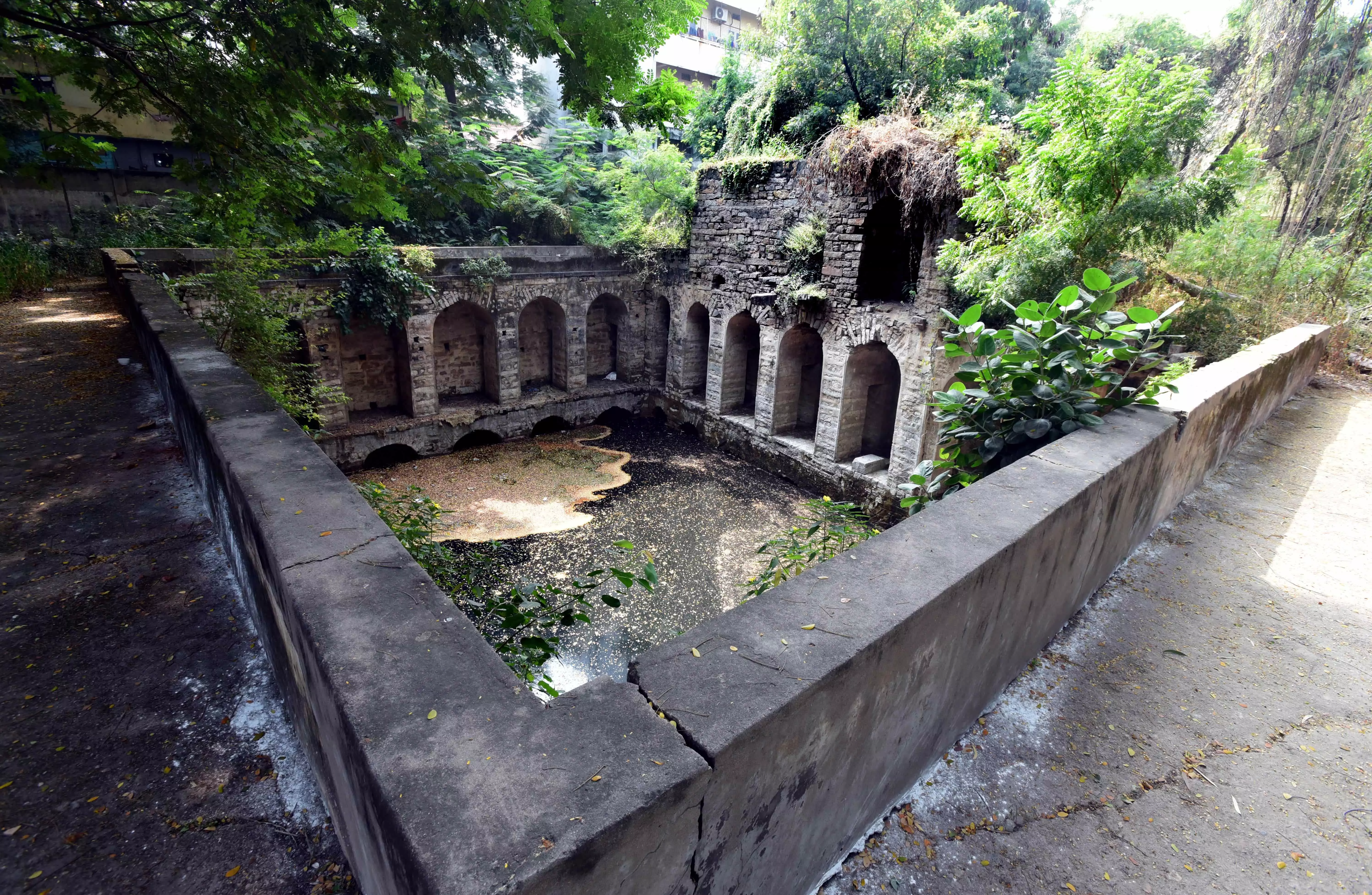Most bowlis in Hyderabad have disappeared but names remain etched for posterity

Hyderabad: Bowlis, implying step wells, were commonplace in Hyderabad of long ago. Many of these historic structures have disappeared over time, and only the names remain. While the government has restored some of them, many others lie forsaken.
Many of those living near the step wells demand their restoration as they are deeply connected to Hyderabad’s history, enhance the beauty of the surroundings and help store rainwater.
Notable areas named after these step wells include Gachibowli, Rajannabowli, Enginebowli, Haribowli and Rethibowli, among others.
In what is certainly official apathy, some existing step wells are filled with garbage and stagnant water covered in thick green algae. Rather than be concerned about their upkeep, GHMC has covered them with grills and fencing.
Bommidi Mohan Reddy from Kandikal Gate said that alongside the government's efforts to rejuvenate Musi River, a serious plan should also be undertaken to restore bowlis, each of which has historical significance. They all need to be preserved for future generations to appreciate and understand the city’s rich history and its architecture marvels.
The step wells in the Qutub Shahi necropolis were conferred the Unesco Asia Pacific award in 2022 as a reward for cultural heritage conservation. The Bansilalpet step well, which has since been restored, is gradually emerging as a major tourist draw going by the football of visitors.
The stepwell at Osmania University was constructed by Mahalaka Chanda Bai, a poet, dancer, singer and political adviser during the Nizam period.
Rajannabowli: Constructed by Raja Bahadur Venkat Ram Reddy, the Kotwal of Hyderabad, at his residence for agriculture use. It was later named as Rajannabowli, according to S. Kanakaraju, local and social worker. He urged the government to redesign and revive it as it can increase ground water levels.
Hamambowli: Premier spot in Laxminagar, Chatrinaka, till it disappeared completely. It was constructed for the sake of long distance travellers, said out Mareddy Damodar Reddy, chairman of Laxmineswara temple at Chatrinaka.
Morambowli: Laxman Raj Bahadur, an officer under the Nizam, constructed the well specifically for farming. Moram is a kind of granite.
Enginebowli: Now lost to history, it was constructed by the Nizam. It got the name because Nizam's railway engines used to be oiled there, said Yadagiri from Enginebowli.
Bathukammabowli: Constructed in 1303 by the Kakatiya ruler Prataparudra II in Gowlipura, it been transformed into a pond, said Raju Yadav a local.
Rethibowli: No more in existence, the name remains iconic. The name rethi, implying sand, was given as sand accumulated after Musi floods.
Gachibowli: Gachi (limestone) bowli was constructed to store water for agriculture and domestic purposes and is now the IT corridor.
Arumotlabowli: Situated at Falaknuma palace, it got the name from the six wells that once provided abundant water to the people, said Jahangir, a local.
Putlibowli: This was so named because of the marble statue in the area.
Haribowli: This is at Akkanna madanna temple in Shalibanda. Hari, Hindi for green, was used as the water at this location would appear green due to stagnation.
Doodhbowli: The water, it was stated, tasted like milk. It was constructed by the Paigahs.
Gangabowli: A landmark at Dabeerpura, water used to flow like a river and end up at Musi.
Alugaddabowli: Taken from alu (potato), farming was first introduced in this area in the 18th century.
Jamsinghbowli: Jamsingh, an officer under the Nizam, constructed a Lord Venkateshwara temple near the well, which was subsequently named after him.
Moosabowli: The well is in Moosa Quadri dargah near Charminar.
Alas, today there are no traces of the existence of many of these amazing architectural and multipurpose facilities.
